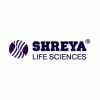Expiration date: 11/2026
Structure and Composition:
1 tablet contains loratadine 10 mg and excipients (MCC, starch, sodium methylparaben, colloidal silicon dioxide, anhydrous, magnesium stearate, sodium starch glycolate, talc purified, purified water) in blisters 7 or 10 pcs., In a cardboard package 1 package.
1 ml syrup contains loratadine 1 mg and excipients (sodium methylparaben, sodium propylparaben, sucrose, propylene glycol, citric acid, sorbitol solution, sodium saccharin, sodium benzoate, disodium edetate, dye sunset, mixed fruit flavors, American ice cream, water purified) in dark glass bottles of 50 or 100 ml, in a cardboard bundle one bottle.
Characteristic:
Tablets - round, flat with bevelled edges and breaking line on the one hand, from white to almost white color.
Syrup - clear liquid orange with a sweet taste and pleasant aroma.
Pharmachologic effect:
Selectively blocking of H1-histamine receptors. It has no central and anticholinergic action.
Pharmacokinetics:
Well absorbed from the gastrointestinal tract. The absorption is independent of food intake. It is metabolized in the liver to the active metabolite - dezkarboetoksiloratadina. Cmax of loratadine and its active metabolite are reached after 1.3-2.5 hours.
Description of the pharmacological actions:
The action begins 30 minutes after ingestion and lasts for 24 hours. It does not cause drowsiness and has no effect on psychomotor function, attention, performance, mental ability.
Testimony:
Allergic rhinitis (seasonal and perennial), hay fever, allergic conjunctivitis, urticaria, including Chronic idiopathic, angioedema, pruritic dermatoses, pseudoallergy reactions, allergic reactions to insect stings.
Contraindications:
Hypersensitivity.
Application of pregnancy and breastfeeding:
It should refrain from the use of the drug during pregnancy and breastfeeding.
Side effect:
From the nervous system and sensory organs: rarely - headache, dizziness, fatigue, irritability (in children).
Cardio-vascular system and blood (blood, hemostasis): rarely - tachycardia.
From the digestive tract: rarely - dry mouth, nausea, vomiting, gastritis, abnormal liver function.
Other: rarely - allergic reactions, in some cases - alopecia.
Drug Interactions:
Erythromycin, ketoconazole and cimetidine increase the concentration of loratadine in plasma (not accompanied by clinical manifestations and effects on ECG). In the application it is not revealed in therapeutic doses interaction with alcohol.
Dosage and administration:
Inside, adults and children (over 12 years of age or with body weight over 30 kg) - 10 mg (. Table 1 or 2 tsp syrup) 1 time per day, the daily dose - 10 mg for children from 2 to 12 years - 5 mg (2.1 Table 1 teaspoon or syrup.) 1 times a day, the daily dose of - 5 mg. Patients with impaired liver function the initial dose - 5 mg / day (due to a possible violation of the clearance of loratadine).
Overdose:
Symptoms: drowsiness, tachycardia, headache.
Treatment: measures aimed at removing the drug from the gastrointestinal tract and reduced absorption.
Precautionary measures:
Not recommended for children under the age of 2 years.
Klaridol
(Loratadine)
- Brand: Shreya



